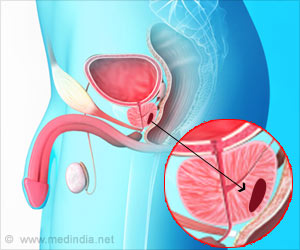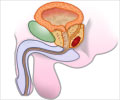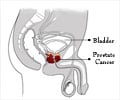Highlights
- New study identifies an image-based biomarker to detect prostate cancer.
- Prostate cancer brings about changes in the shape of the gland as well as a compartment within the gland called transitional zone.
- These differences in shape consistently differ in men with prostate cancer than those without the disease.
"Looking at shape is a fundamental shift from looking at the intensity of pixels in an image to predict if a patient has prostate cancer," said Anant Madabhushi, F. Alex Nason professor II of biomedical engineering and leader of the research. "Pixel intensities vary, but shape is resilient."
"Here, we potentially have an image-based biomarker for prostate cancer, which is not greatly sensitive to the MRI parameters used by each institution, the maker of the MRI or the scanner itself, " Madabhushi said.
There were an estimated 180,890 new cases of prostate cancer in 1026 in the U.S.
The estimated prostate cancer related deaths n 2016 was 26,120.
Differences in MRI
To assess the differences in shape of the prostate gland, the researchers took images of 35 cancerous prostates, aligned them into a single frame and created a statistical shape atlas.
They then took images of 35 healthy prostates, aligned them in one frame and created a second statistical shape atlas.
The researchers then compared the sizes of prostate gland with cancer and a non-cancerous condition called benign prostatic hypertrophy which also increases the size of the gland.
On comparison of cancerous and cancer-free prostates, it showed clear, statistically significant differences in both the shape of the gland as well as the transitional zone.
Transitional zone is in the central part of the gland. It is surrounded by the peripheral zone.
The researchers found consistent differences in shapes between cancerous and cancer-free prostates.
Differences in Architecture
In a paper published in the December issue of the Journal of Magnetic Resonance Imaging, Madabhushi and colleagues found prostate cancer caused significant changes in the shape of the prostate apex in the peripheral zone, while benign prostatic hypertrophy caused changes on the posterior side of the transitional zone for patients without cancer.
The cancerous features in the peripheral zone differed from cancerous features found in the rest of the gland, leading to identification of tumors.
Conclusion
If the shape proves to be a reliable marker of cancer, it could be combined with radiomics. Radiomics uses computer algorithms to understand differentiating features in cancerous and non-cancerous tissues.
Researchers are working to identify radiomic features from the peripheral and transitional zones along with measurements derived from the prostate shape, which could be used as predictors of prostate cancer
The researchers are also trying to determine whether shape can be a predictor of the aggressiveness of cancer which will help in determining how the disease is treated.
The research is published in Scientific Reports.
References
- Cancer Stat Facts: Prostate Cancer - (https://seer.cancer.gov/statfacts/html/prost.html)
- Anant Madabhushi et al. Computational imaging reveals shape differences between normal and malignant prostates on MRI. Scientific Reports; (2017) doi:10.1038/srep41261
Source-Medindia







![Prostate Specific Antigen [PSA] Prostate Specific Antigen [PSA]](https://www.medindia.net/images/common/patientinfo/120_100/prostate-specific-antigen.jpg)






